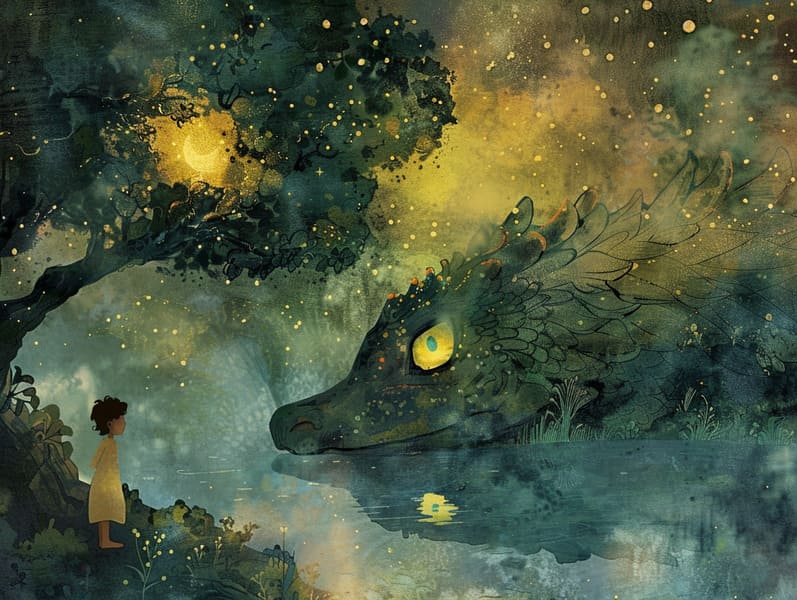The Origins of Short Fairy Tales with the Unceasing Appeal.
The Origins of Short Fairy Tales with the Unceasing Appeal.
Blog Article

Fairy tales for kids have old origins. These tales have been told from one generation to the next far before they were ever documented. They arose from a variety of backgrounds, including Western traditions. They were initially narrated among elders, often carrying themes and messages pertaining to the societal norms and beliefs of the time.
The famous Grimm duo, Jacob and Wilhelm Grimm, were among the first to compile many of these beloved narratives. Their compilation, "Grimm's Fables," included tales like "Cinderella," "Little Brother and Little Sister," and "Little Snow White," which have since become essentials in the world of traditional fairy tales. Similarly, H. C. Andersen's charming stories, such as "The Mermaid," and "The Duckling that Could," have floated into hearts worldwide, cementing their place in the pantheon of beloved fairy tales.
Despite their ancient origins, classic fairy tales remain as applicable as ever, especially as nighttime stories for kids. These delightful tales are now available in various formats, including gorgeously illustrated books, fantastical animations, and digital storybooks.
Their continued relevance can be ascribed to several fascinating points:
Ethical Lessons: Ancient fairy tales often illustrate important moral lessons. Narratives like "The Wolf and the Liar" teach the significance of being truthful, while "The Story of the Tortoise and the Hare" show the benefits of resolve and humility. These stories offer kids clear distinctions between right and wrong, guiding their moral compass in a mild yet deep way.
Compassion and Knowledge: Traditional fairy tales frequently portray beings facing challenges and problems, inciting readers to feel with their struggles and boost their triumphs. For instance, "Beauty and the Beast" reveals the necessity of looking past the exterior to acknowledge the real person of a soul, advancing perception and comprehension.
Cultural Perception: Many classic fairy tales are deeply embedded in the cultural contexts from which they were born. Learning from these fairy tales can provide fascinating glimpses into different traditions, fostering a sense of cultural respect and recognition.
Fantasy and Imagination: The fantastical elements in fairy tales—spells and potions—generate children’s dreaming abilities. These narratives guide readers to magical realms, stimulating creative ideas and a sense of delight that remains a lifetime.
Traditional fairy tales are not only charming but also pedagogical. They function as entrancing tools in promoting various mental and emotional abilities in little ones. When ancient fairy tales are spoken, they improve verbal skills by presenting new word meanings and complex sentence structures. This practice also advances auditory skills and mental focus, as young readers hang on every word, ready to see what happens next.
Furthermore, deliberating the themes and characters of fairy tales can develop cognitive skills and logical thinking. Little ones are taught to identify patterns, predict happenings, and get cause and effect. These discussions also advance little ones speak out their thoughts and feelings, enhancing their emotional intelligence.
In today’s high-tech era, the presence of digital storybooks has made these stories more attainable than ever. Web-based platforms and programs present huge assortments of Grimm's fairy tales this site that can be perused or listened through anytime, anywhere. Fairy tales spoken are particularly prevalent, featuring an captivating way for the young to enjoy these spellbinding stories. Audio stories and read-out-loud stories guide characters and settings to life, often supported by whimsical harmonies and songs that enrich the tale journey.
The persistent attraction of old fairy tales lies in their ability to evolve to current times while retaining their fundamental ideas. Contemporary adaptations of these fairy tales often show more representative protagonists and modern settings, making them relatable to today’s audience. However, the main ideas of gallantry, compassion, and justice remain unchanged, continuing to reach listeners of all ages.
Traditional fairy tales also offer a sense of ease and predictability. They supply a structured narrative with a distinct beginning, middle, and end, often drawing to a close with the conclusion of conflicts and the triumph of justice over injustice. This constancy can be encouraging for kids, spreading a sense of assuredness in an dynamic world.
Traditional fairy tales continue to allure and train new generations, maintaining their delight and applicability in modern society. As children's night stories, they bestow a perfect blend of fantasy and learning, advancing moral values, empathy, and creativity. The presence of digital storybooks and the well-received status of fairy tales read out loud warrant that these timeless narratives remain available to new generations.
By continuing and spreading these tales, we continue to laud the rich tapestry of cultural heritage and cultural heritage. Whether you are browsing a beautifully illustrated book, experiencing a internet library, or listening through an audiobook, the appeal of Grimm's fairy tales is always within reach. These tales emphasize of the undying nature of narratives and its ability to unify us across generations and cultures.
Regardless if you are delving into a vibrantly illustrated book, delving into a online library, or hearing an narrated book, the wonder of Grimm's fairy tales is always within reach.
These stories teach us of the timeless ability of stories and its ability to tie us across generations and cultures, weaving a spell that delights and instructs alike.